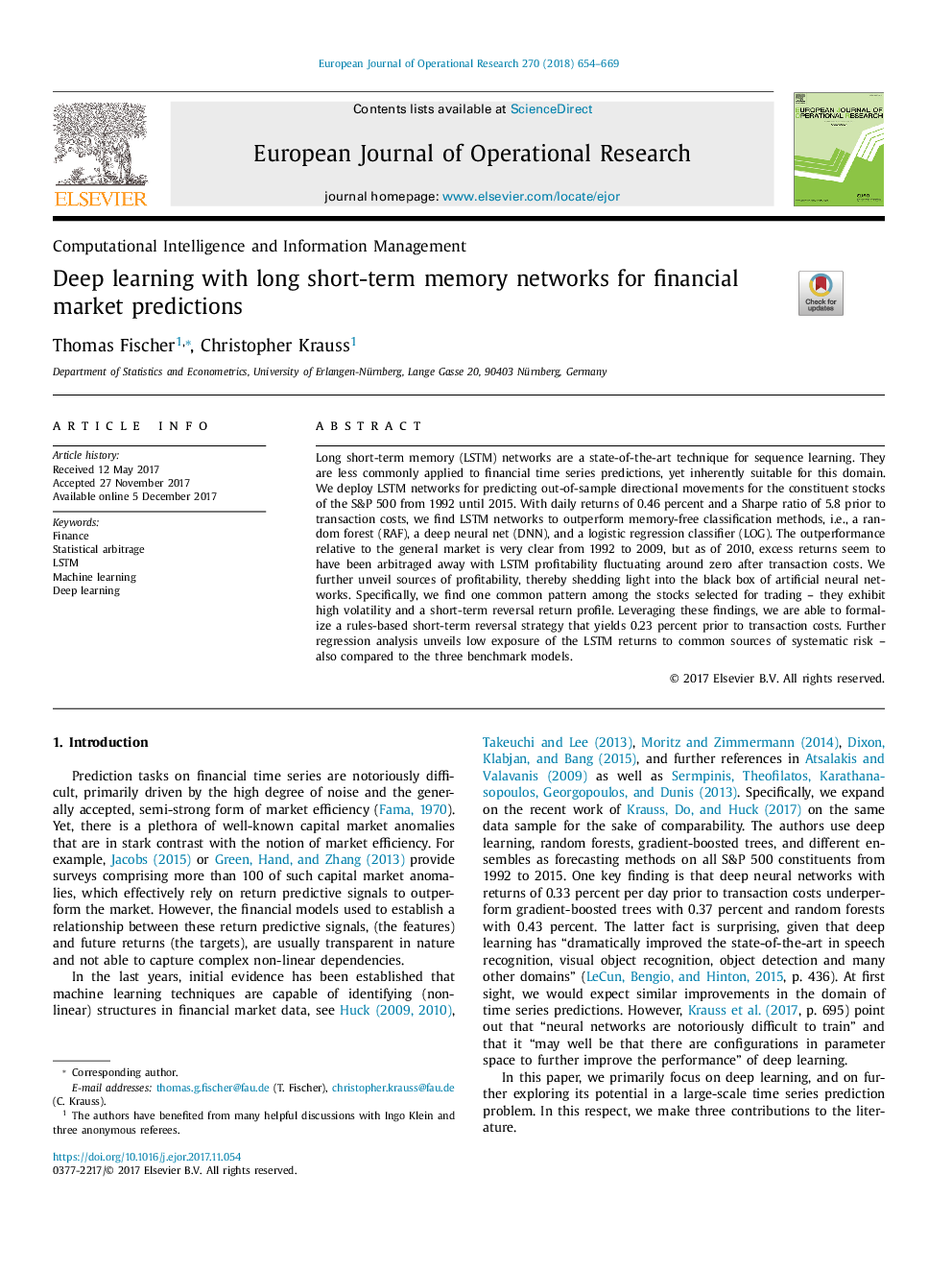| Article ID | Journal | Published Year | Pages | File Type |
|---|---|---|---|---|
| 6894593 | European Journal of Operational Research | 2018 | 16 Pages |
Abstract
Long short-term memory (LSTM) networks are a state-of-the-art technique for sequence learning. They are less commonly applied to financial time series predictions, yet inherently suitable for this domain. We deploy LSTM networks for predicting out-of-sample directional movements for the constituent stocks of the S&P 500 from 1992 until 2015. With daily returns of 0.46 percent and a Sharpe ratio of 5.8 prior to transaction costs, we find LSTM networks to outperform memory-free classification methods, i.e., a random forest (RAF), a deep neural net (DNN), and a logistic regression classifier (LOG). The outperformance relative to the general market is very clear from 1992 to 2009, but as of 2010, excess returns seem to have been arbitraged away with LSTM profitability fluctuating around zero after transaction costs. We further unveil sources of profitability, thereby shedding light into the black box of artificial neural networks. Specifically, we find one common pattern among the stocks selected for trading - they exhibit high volatility and a short-term reversal return profile. Leveraging these findings, we are able to formalize a rules-based short-term reversal strategy that yields 0.23 percent prior to transaction costs. Further regression analysis unveils low exposure of the LSTM returns to common sources of systematic risk - also compared to the three benchmark models.
Related Topics
Physical Sciences and Engineering
Computer Science
Computer Science (General)
Authors
Thomas Fischer, Christopher Krauss,
